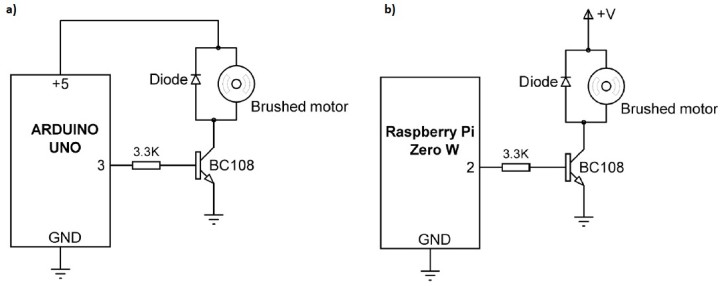Book Review: Motor Control: Projects with Arduino & Raspberry Pi Zero W
Motor Control Projects
Project 1 features a brushed DC motor that can operate with 3 to 6 V is connected to a microcontroller via a transistor driver. The motor turns on for 10 seconds and off for 5 seconds, and the process repeats until you stop it. The numerous projects that follow are bit more complicated, but Ibrahim takes pains to simplify the technical details as much as possible. For instance, when covering pulse-width modulation (PWM) control, he clearly illustrates the duty cycle of the PWM wave and uses simple equations to explain the key concepts.
After covering simple DC motor projects in Chapter 2, Ibrahim tackles simple stepper motor projects in Chapter 3 and servo motor projects in Chapter 4. One of his more interesting designs is an obstacle-avoiding robot, which features an ultrasonic sensor module for detecting the distance between the robot and objects in its vicinity. According to Ibrahim, “If the distance to the object is 50 cm or less, then the robot turns left until it finds a clearance with no objects within 50 cm and it then goes forward.” Refer to the well-written code in Chapter 2 to develop a similar project.
Read full article
Hide full article


Discussion (2 comments)